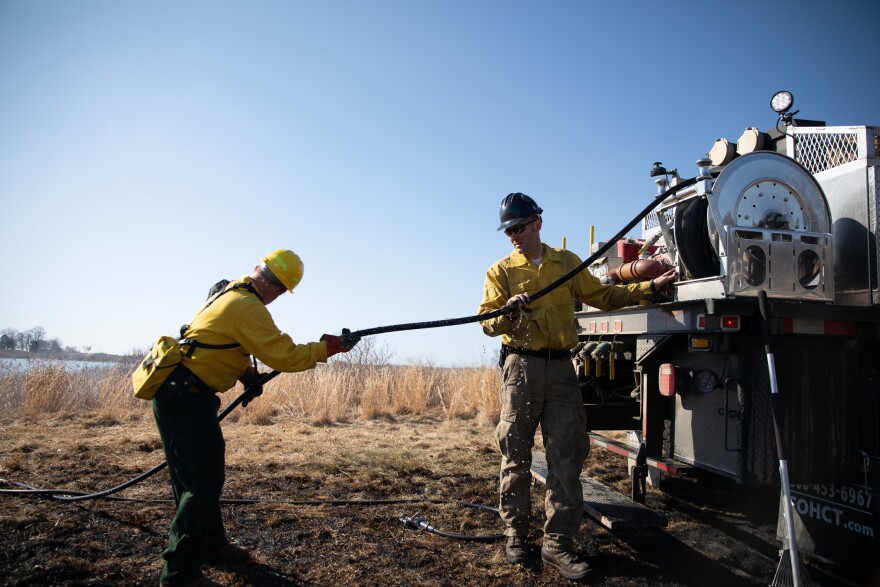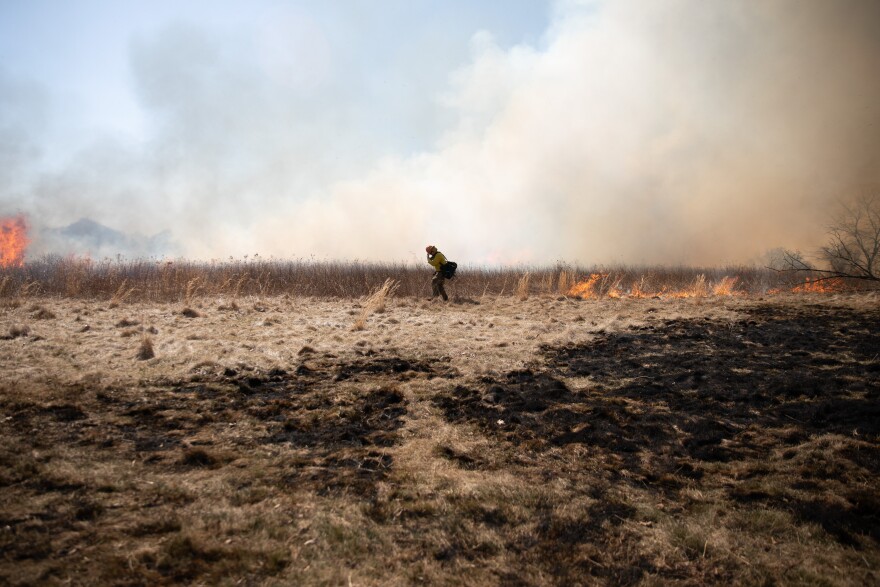Recently, part of Harkness Memorial State Park in Waterford caught fire.
But this shoreline blaze wasn’t a disaster.
It was actually a carefully-planned “burn” aimed at preserving what’s been called the “last remnant” of eastern prairie in Connecticut.
Before fifteen acres are set to flame, workers scorch ground, creating a blackened “safe zone” to contain the fire.

Each member of the crew has a specific role. Bruce Villwock, district fire warden, hauls a hose used to wet down land adjacent to the planned blaze.

Working with Villwock is Joe Burnham, seasonal fire control staff and a full-time Mansfield firefighter. Today, Burnham is in charge of the site’s water tanker, aptly named “Burnham.”

Rich Schenk is the burn’s safety officer. He’s one of three people today who will be “in the flames,” working the radio and making sure the burn goes according to its detailed plan. “I’ve been doing it for thirty something years,” Schenk said. “In Connecticut and I travel nationally.”

Villwock and Burnham reel in the hose.

Two torches rest on the tailgate of a truck. For wildlife biologist Jane Seymour, this is her second burn. “One reason that we use the fire to manage wildlife habitat is to keep it at that early stage,” Seymour said. “We’re trying to save the last remnants of these grassland habitats for the species that depend on them.”

For today’s burn, the crew is 14 people: one biologist, four foresters, five fire control staff, and four park staffers. “The purpose of this burn is to maintain the fields and native grasses,” said Helene Hochholzer, the state’s forest protection supervisor. “While providing habitat for some of the grassland birds.”

Forester Emery Gluck is today’s “burn boss.” Before Gluck sets torch to grass, he warns his crew about the dangers of fire, even in a controlled setting. “These flames will probably go between a few feet in the tall grass,” Gluck said, “to well over ten-fifteen feet with a head fire. And burn very fast.”






